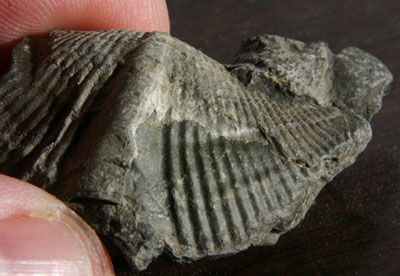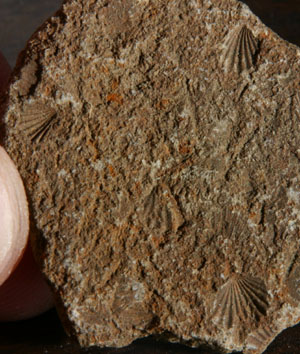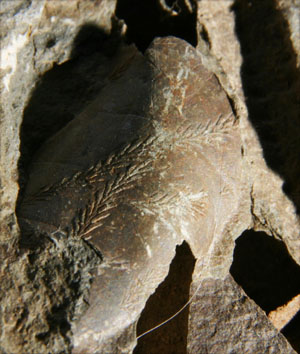I’m not much for blogging about details of my life, and try to concentrate instead on items of interest. This one falls somewhere in the middle, I think.
 Last weekend, I flew up to central New York – a vast region often called “upstate” to differentiate it from New York City, which is what most people think of when they hear “New York.” If you’re one of those people, go look at a map, and get over it. I grew up in the Finger Lakes region, and returned there briefly for a kind-of family reunion. That was all well and good, I suppose, and I got to meet a cousin I hadn’t seen or talked to in, seriously, 37 years. But I was more motivated to get out and appreciate the area in late summer, because it’s a gorgeous area with some pleasant geography. Not being a winter person, however, I’m glad not to be there when the snows arrive…
Last weekend, I flew up to central New York – a vast region often called “upstate” to differentiate it from New York City, which is what most people think of when they hear “New York.” If you’re one of those people, go look at a map, and get over it. I grew up in the Finger Lakes region, and returned there briefly for a kind-of family reunion. That was all well and good, I suppose, and I got to meet a cousin I hadn’t seen or talked to in, seriously, 37 years. But I was more motivated to get out and appreciate the area in late summer, because it’s a gorgeous area with some pleasant geography. Not being a winter person, however, I’m glad not to be there when the snows arrive…
With the help of my brother, I got down to see Carpenter’s Falls on Skaneateles Lake, a place I’d never been to despite the length of time I’d lived not far away. Access is fairly easy, though the trails close to the falls require sure-footedness. The flow doesn’t compare to many other waterfalls, but the drop is significant and the view is very nice and largely unspoiled.
As you might be able to see from the photo, the geology is primarily shale in this region, and provides another opportunity to the explorer: fossil hunting. My brother has become quite good at it, and is able to spot likely fossil-bearing rock from a short distance. So after we got done playing around the falls, we checked out an area close by that featured a shale face with easy access, and started searching. You might imagine that fossil-hunting involves meticulous work and those pointy hammers, but that’s only true in some cases, and not in this one. Certain shale layers host truly vast numbers of specimens, and the rock layers can be split apart with finger pressure. You can fill your pockets or a bag with specimens within an hour, easily.
 This region of NY appears to feature fossils from the Devonian/Silurian period border, somewhere around 416 million years ago. Ocean life was abundant, but just starting to get complex, and terrestrial plants weren’t really around yet. Here I have a brachiopod, probably a spiriferidine, which shows the impression of the underside of the shell (towards the bottom of the photo), as well as the petrified remains of the shell itself (the lighter portion in the center of the pattern). The lines sloping crosswise to the “ribs” are growth lines of the organism. Don’t get the impression I know all of this offhand – I found out most of this while researching this post…
This region of NY appears to feature fossils from the Devonian/Silurian period border, somewhere around 416 million years ago. Ocean life was abundant, but just starting to get complex, and terrestrial plants weren’t really around yet. Here I have a brachiopod, probably a spiriferidine, which shows the impression of the underside of the shell (towards the bottom of the photo), as well as the petrified remains of the shell itself (the lighter portion in the center of the pattern). The lines sloping crosswise to the “ribs” are growth lines of the organism. Don’t get the impression I know all of this offhand – I found out most of this while researching this post…
 And I have this thin slab, 4 cm across at its widest point, that shows a collection of shells virtually indistinguishable from a modern day scallop – the only thing missing are the little tabs near the joint. Now, think about this a second: in 416 million years, the outward appearance (and primary function) of this organism has changed barely at all. In that same time, the first animals left the sea for the land, developed into countless species (like the dinosaurs), most of which vanished through extinctions, and we ourselves were probably some rodent or lemur-like thing when the dinosaurs died out 65 million years ago. Australopithecus afarensis, commonly referred to as “Lucy” and potentially our ancestor, comes from about 3.5 million years ago and looked only vaguely like us. But “scallops” barely changed at all. That’s what I call a successful organism. Not to mention tasty wrapped in bacon.
And I have this thin slab, 4 cm across at its widest point, that shows a collection of shells virtually indistinguishable from a modern day scallop – the only thing missing are the little tabs near the joint. Now, think about this a second: in 416 million years, the outward appearance (and primary function) of this organism has changed barely at all. In that same time, the first animals left the sea for the land, developed into countless species (like the dinosaurs), most of which vanished through extinctions, and we ourselves were probably some rodent or lemur-like thing when the dinosaurs died out 65 million years ago. Australopithecus afarensis, commonly referred to as “Lucy” and potentially our ancestor, comes from about 3.5 million years ago and looked only vaguely like us. But “scallops” barely changed at all. That’s what I call a successful organism. Not to mention tasty wrapped in bacon.
 My favorite, from the short exploration, is this one. Splitting it open, I found two fossils overlapping. One of them certainly seems to be a plant, and from this time period, it would have to be aquatic, since land plants weren’t this fully formed. And since they rarely fossilize, I was pleased to see it. It’s draped across something that I haven’t yet identified, but I’m reminded irresistibly of chitin, the hard exoskeleton of something. It’s very thin, and actually has a hollow tunnel directly underneath it from yet another species – it appears it may have even conformed to the shape of the underlying organism. It’s also a distinctly different color from the surrounding rock. And I have both impressions, top and bottom, on the split rock layers. The whole chitiny structure is about the size of a fingernail, so the “leaves” are tiny and delicate indeed.
My favorite, from the short exploration, is this one. Splitting it open, I found two fossils overlapping. One of them certainly seems to be a plant, and from this time period, it would have to be aquatic, since land plants weren’t this fully formed. And since they rarely fossilize, I was pleased to see it. It’s draped across something that I haven’t yet identified, but I’m reminded irresistibly of chitin, the hard exoskeleton of something. It’s very thin, and actually has a hollow tunnel directly underneath it from yet another species – it appears it may have even conformed to the shape of the underlying organism. It’s also a distinctly different color from the surrounding rock. And I have both impressions, top and bottom, on the split rock layers. The whole chitiny structure is about the size of a fingernail, so the “leaves” are tiny and delicate indeed.
So, no trilobites yet, though they did exist in this time period, and I’ve found fragments, but this one is a neat find anyway. Where I live now in North Carolina, there are no fossils to be found – the whole area east of the Appalachian is erosion from the formerly great mountain range, which was formed during the collision with North Africa. Hundreds to thousands of feet below me was once a sea bed, but between me and that is silicates and mica, and any fossils that might have been in that have long since been destroyed by geologic heat and pressure. Essentially, the mountains erode into sand and have extended the shoreline from the base of the mountains down to where it is now. What I can find here is mostly pre-sand silicate rock. And clay. Lots and lots of clay. One of these days I’ll get out west and try to find something much younger but more interesting, like dinosaur tracks.
And now, another pause for thought. Long ago, some sea creatures died, and settled to the bottom. Something happened to cover them in mud – maybe a flood or a landslide, maybe just a storm. But there they remained, undisturbed, as layer after layer piled on top over thousands of years. The weight compressed the sediment, and it changed. And the minerals within it swapped places with the remains of the creatures, without actually disturbing things. Molecule by molecule, the creatures became statues of themselves.
The sea bed moved, thousands of miles at something much slower than a snail’s pace, and eventually lifted free of the waters. High above, hundreds of distant relatives of the dead creatures walked over the surface, never having the faintest idea what lay beneath, not even capable of thoughts of such caliber. Very, very recently, a glacier roamed over the land, ponderously slow yet many times faster than the movement of the rock itself that held the dead creatures, and with the force of gravity and tons of compacted snow and accompanying debris, gouged a huge tear in the landscape, down even past the layer where the sea bed used to be, down past much older sea beds. The glacier melted, and rains came, and the tear in the rock became a long thin lake. More rains, and yearly freezes, broke away flakes of the former mud flow, now rock, and tumbled them further down the ravine. Thousands upon thousands of similar creature remains became rubble, fragments, sand and grit, forever indistinguishable from the rock that used to hold them. But many remained, still in the layers of stone, but rapidly coming closer and closer to exposure.
A path nearby became a road, and rather suddenly, a couple of primate descendants of those dead creatures gathered the last few millimeters of stone encasing those remains, and abruptly exposed them to the light for the first time in 416 million years. A fragment of a story, so close to being lost forever like so many others, is revealed and pondered over. Soon, it will vanish again, but for a brief moment in time, a few dead creatures provide a tiny insight into life so very far in the past.
Maybe this is just the human perspective talking, but damn that’s cool!



















































